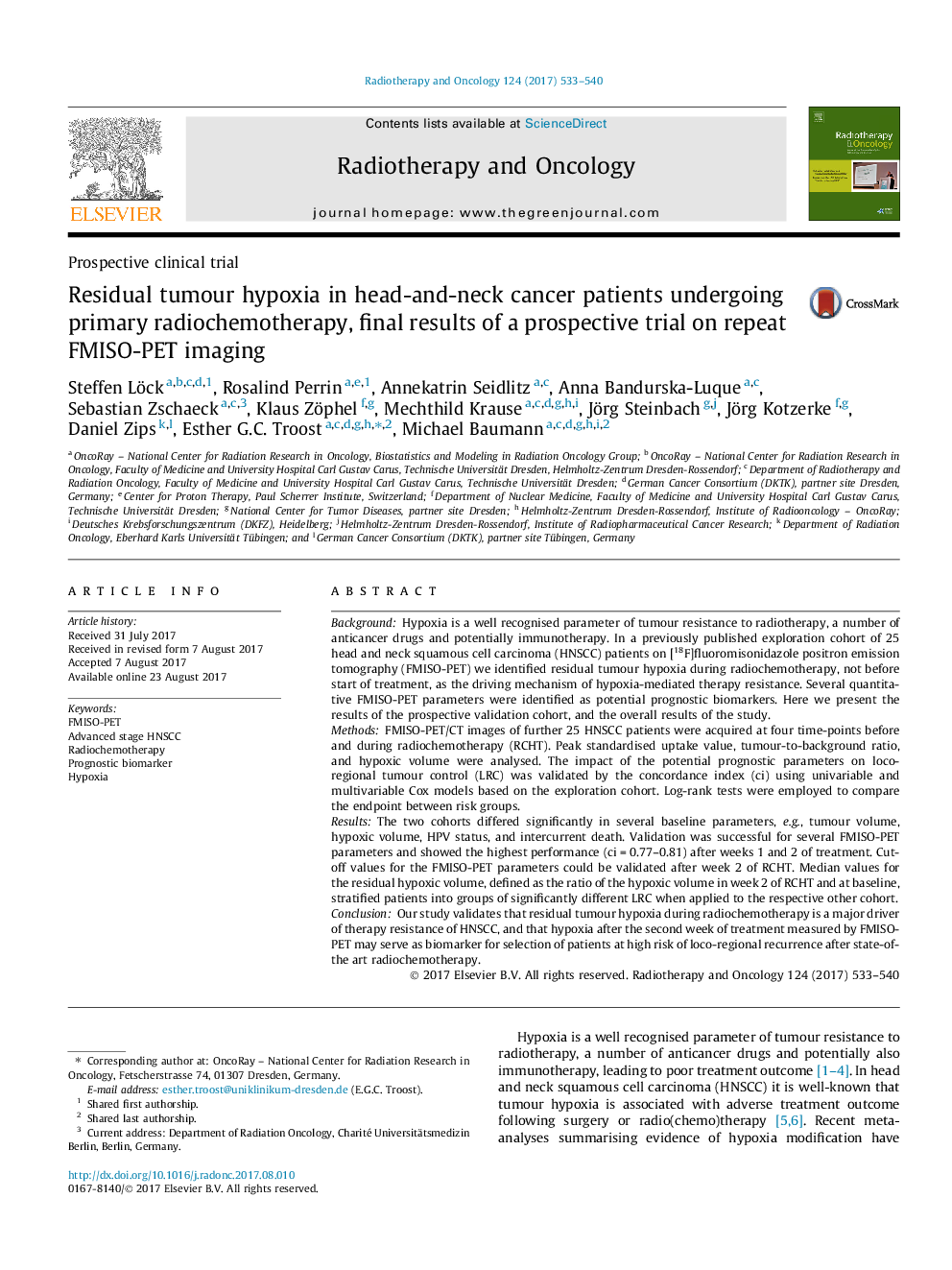| کد مقاله | کد نشریه | سال انتشار | مقاله انگلیسی | نسخه تمام متن |
|---|---|---|---|---|
| 5529452 | 1548894 | 2017 | 8 صفحه PDF | دانلود رایگان |

BackgroundHypoxia is a well recognised parameter of tumour resistance to radiotherapy, a number of anticancer drugs and potentially immunotherapy. In a previously published exploration cohort of 25 head and neck squamous cell carcinoma (HNSCC) patients on [18F]fluoromisonidazole positron emission tomography (FMISO-PET) we identified residual tumour hypoxia during radiochemotherapy, not before start of treatment, as the driving mechanism of hypoxia-mediated therapy resistance. Several quantitative FMISO-PET parameters were identified as potential prognostic biomarkers. Here we present the results of the prospective validation cohort, and the overall results of the study.MethodsFMISO-PET/CT images of further 25 HNSCC patients were acquired at four time-points before and during radiochemotherapy (RCHT). Peak standardised uptake value, tumour-to-background ratio, and hypoxic volume were analysed. The impact of the potential prognostic parameters on loco-regional tumour control (LRC) was validated by the concordance index (ci) using univariable and multivariable Cox models based on the exploration cohort. Log-rank tests were employed to compare the endpoint between risk groups.ResultsThe two cohorts differed significantly in several baseline parameters, e.g., tumour volume, hypoxic volume, HPV status, and intercurrent death. Validation was successful for several FMISO-PET parameters and showed the highest performance (ci = 0.77-0.81) after weeks 1 and 2 of treatment. Cut-off values for the FMISO-PET parameters could be validated after week 2 of RCHT. Median values for the residual hypoxic volume, defined as the ratio of the hypoxic volume in week 2 of RCHT and at baseline, stratified patients into groups of significantly different LRC when applied to the respective other cohort.ConclusionOur study validates that residual tumour hypoxia during radiochemotherapy is a major driver of therapy resistance of HNSCC, and that hypoxia after the second week of treatment measured by FMISO-PET may serve as biomarker for selection of patients at high risk of loco-regional recurrence after state-of-the art radiochemotherapy.
Journal: Radiotherapy and Oncology - Volume 124, Issue 3, September 2017, Pages 533-540